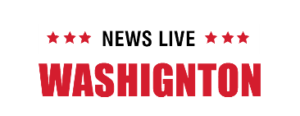WOODSTOCK, N.Y. (AP) — Hard of hearing, Thomas Edison found a unique way to appreciate piano music. When someone was playing, the great inventor would lean over the instrument, right above the keys, and bite the piano.
Pressing his teeth into the wood of gramophones and pianos helped Edison feel the vibrations in his skull. Or, in his own words, it allowed him to “hear through his teeth.”
Robert Friedman recently showed the marks on a Steinway grand piano that once belonged to Edison – a group of shallow indentations in the black lacquer finish above the keyboard. Friedman, who buys and sells Steinways, purchased the piano last year and says he was surprised by the jagged signatures left by the inventor of the phonograph. Now he is looking for the right home for the new historical artifact.
“I think it belongs somewhere where many, many, many people can see it,” Friedman said.
Edison bought a Model “B” Ebony from Steinway & Sons in 1890 for $725. The sales documents include a handwritten note “office furniture,” indicating that it was shipped to his lab in New Jersey. The piano “for some reason unknown to me gives better results than any yet attempted,” Edison wrote to the company. “Please send the invoice with the lowest price.”
Edison invented the phonograph in 1877. After buying a piano 13 years later, he experimented with sound recording. Edison owned the instrument for decades, so it is possible that it was used in early recordings.
So did Edison’s teeth make these marks?
There is no known old black and white photo of Edison biting this piano to prove it. But he was known to bite into gramophones and pianos to help him experience music when his hearing was failing. One day, his daughter recalled how a visitor cried when he saw Edison sitting at the piano while someone was playing it.
“I hear through my teeth and my skull,” Edison was quoted as saying in a 2019 biography of Edmund Morris. “I bite my teeth into the wood, and then it comes out nice and strong.”
The wording for Friedman is simple: these are teeth marks, and who else would bite a piano?
“I’ve probably owned several thousand Steinways over the last 50 years,” Friedman said. “I’ve never seen anything like it.”
Friedman purchased the piano for approximately $45,000 in early January 2021 as part of an estate sale on Long Island. Friedman didn’t notice the tracks at first.
His friend Charles Frommer, a musician and recording history buff, came to Friedman’s home in New York’s Hudson Valley to tune the piano, noticed the indentations, and told him “they were Edison’s bite marks.”
Freedman, who calls himself a Steinway hunter, finds and buys high-end pianos from people and then sells them, usually to dealers or restorers. But this one is more complicated.
Given the piano’s historical connection, he does not want it to return to private hands. He has yet to find a suitable historic site to purchase the piano he is offering for what it cost him to purchase, ship and repair.
The Thomas Edison National Historic Park in West Orange, New Jersey, passed up the chance to purchase the piano from its previous owner in 2020 for several reasons, including limited space, cost and the fact that some of the original interior details era have been replaced since Edison owned it, museum curator Jerry Fabrice said in an email.
Friedman was undaunted and is still looking for a home. You can also make a documentary or record a piano for a virtual library of instrument samples. Meanwhile, the piano has been unveiled at a fund-raising event for the Ulster Jewish Federation at the Woodstock home of friends who until recently kept the instrument.
And, yes, Edison’s listening technique was tried on the piano. Unwilling to label the instrument further, Frommer said they tried it with wooden pads placed on the piano.
“We were able to replicate this effect,” Frommer said. “And yes, you can actually hear it in your skull.”







